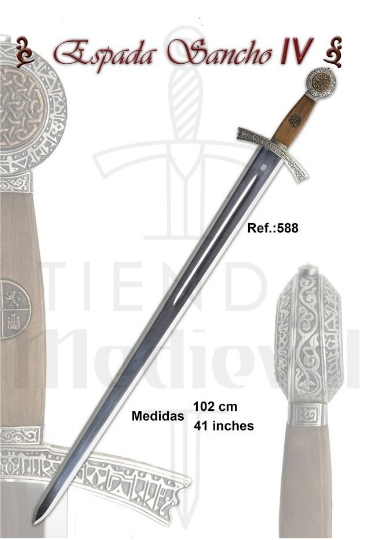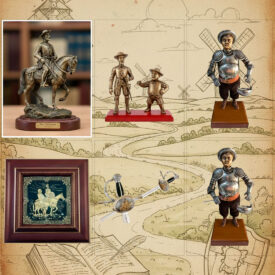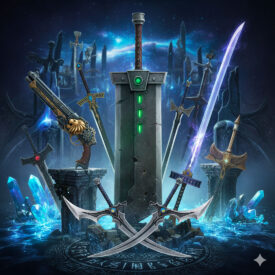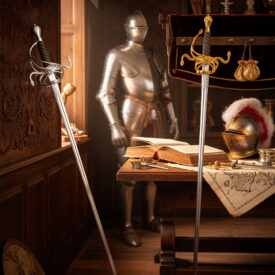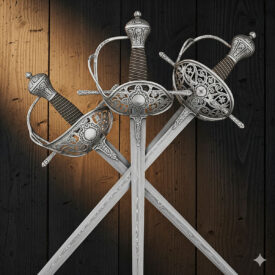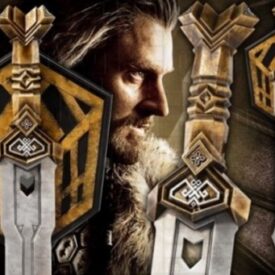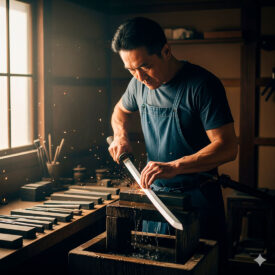What can a sword buried seven centuries ago tell us? Imagine the cold stone of Toledo Cathedral opening like a sealed book and, among the folds of time, a sword appearing that still retains vestiges of its glory. The Sword of Sancho IV of Castile is not just a metallic object: it is a material witness of power, heritage, and royal rituals, and at the same time a puzzle for archaeologists and historians.
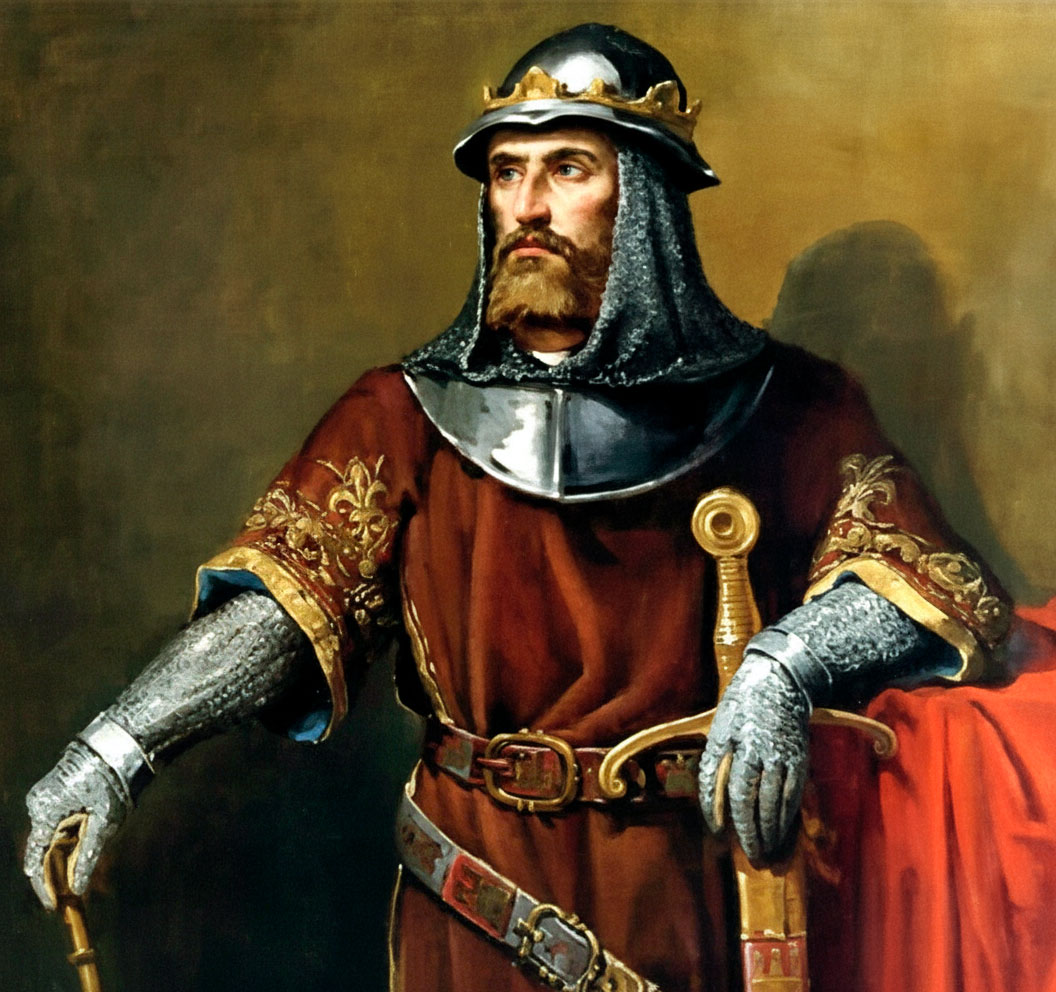
In this article, I will take you through the life of King Sancho IV, the archaeological finding of 1947, the technical and artistic characteristics of the weapon, hypotheses about its origin and heritage, and what these types of pieces teach us about metallurgy and 13th-century society. You will learn to read a sword as if it were a document: form, decoration, dimensions, and funerary context are the words that compose its discourse.
This journey combines historical rigor, archaeological observation, and an evocative narrative to place you in front of the object and the man who wielded it (or inherited it).
Timeline of the Sword of Sancho IV of Castile
| Era | Event |
|---|---|
| 13th Century | The sword is classified as a classic rapier of the Middle Ages, from the 13th century. |
| Before 1284 | It is suggested that the sword, like the crown, may have been inherited by Sancho IV, so it was forged before his ascent to the throne. Its 95 mm hilt does not match the king’s tall stature, indicating that it was not made for him and that it was an inherited piece. The spurs attributed to Sancho IV are of little value and vulgar workmanship, possibly from when he was a prince, which reinforces the idea of reused or economical regalia. It was common to reserve sumptuous weapons for ceremonies and to use simpler pieces in campaign. |
| 1284–1295 | Reign of Sancho IV of Castile and León. |
| 1295 | Sancho IV dies in Toledo from phthisis (36-37 years old) and is buried in the Santa Cruz Chapel of Toledo Cathedral, which he ordered to be built. |
| 1498 (15th century) | Cardinal Cisneros expands the presbytery of Toledo Cathedral; the remains of Sancho IV are moved to the tombs that Cisneros commissioned from Diego Copín de Holanda in the new presbytery. |
| 1947 | During an archaeological exploration in the presbytery of Toledo Cathedral, the mummified remains of Sancho IV and his funerary regalia were located. The sword appeared held by the corpse, with the hilt gilded and fragments of an inscription on the blade, which showed rust in some parts. |
| Currently | The sword is publicly displayed in the Tapestry Museum of Toledo Cathedral, along with the crown and pillow from his funerary regalia. |
| Observation | Unlike modern replicas (stainless steel blades and fine engravings), the original blade lacked a mark or punch from the swordsmith, as that custom became widespread later. |
Sancho IV: the King and the Sword’s Setting
Sancho IV, called “the Brave”, was born in Valladolid on May 12, 1258. Son of Alfonso X “the Wise” and Violante of Aragon, his person and reign are marked by dynastic tensions and military conflicts. His ascension to the throne in 1284 was controversial: despite being disinherited by his father, Sancho managed to consolidate his authority until his death in 1295.
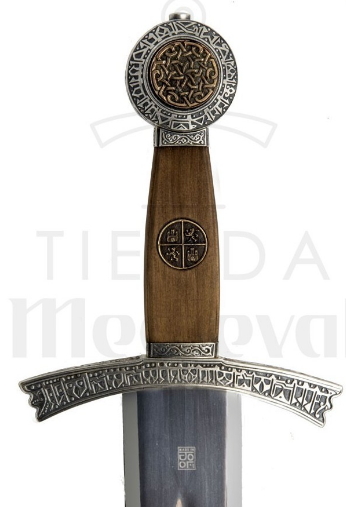
The figure of the king is drawn in the sources as a man of strong physical presence and military character. Contemporary chronicles and documents associate him with Reconquista campaigns, highlighting the political importance of his person for Castilian stability at the end of the 13th century.
Political Context and Significance of the Funerary Regalia
Understanding the sword in its funerary context is key. When a king is buried with personal objects, those objects communicate a story: status, legitimacy, dynastic memory. However, not always the most materially valuable items were buried; sometimes it was preferred to preserve certain goods for the dynasty and deposit objects with symbolic value in the tomb.
In the case of Sancho IV, the presence of a gilded crown and an ornamented sword speaks of the intention to reproduce the royal image. But studies indicate that the regalia includes pieces perhaps reused or of modest workmanship, which raises doubts about the real function of that regalia: ceremonial, symbolic, or simply practical?
The 1947 Discovery: Archaeology That Raises Questions
The 1947 exploration in the presbytery of Toledo Cathedral, initially aimed at locating other royal remains, led to the discovery of the mummified remains of Sancho IV and his regalia. The state of preservation was surprising: the mummy, the crown, the pillow, and the sword offered a set with a strong informative load.
The weapon appeared grasped by the corpse. Although the blade showed oxidations and the inscription only preserved fragments, the mounting and the decoration of the hilt showed gilded and chiselled work of quality. These elements have fueled debates: was it the king’s usual sword or an inherited piece with symbolic value?
Archaeological Interpretations
- Dynastic Heritage: the hilt and crown could come from previous generations, possibly from Ferdinand III, which would explain morphological mismatches between the weapon and its bearer.
- Ceremonial Object: the ornamentation suggests a more liturgical or symbolic function than purely warlike.
- Secondary or Reused Use: the scabbard was not original and lacked a clasp, which indicates that the sword was not prepared for habitual carrying in campaign.
Technical and Artistic Description of the Sword
The sword preserved next to Sancho IV presents characteristics of a 13th-century rapier: a blade designed for cutting and thrusting, a cross-guard with downward-curving quillons, a lobed pommel, and a gilded hilt. The ornamentation includes interlaces and motifs that some authors have interpreted as Islamic influences or decorative traditions from Toledo.
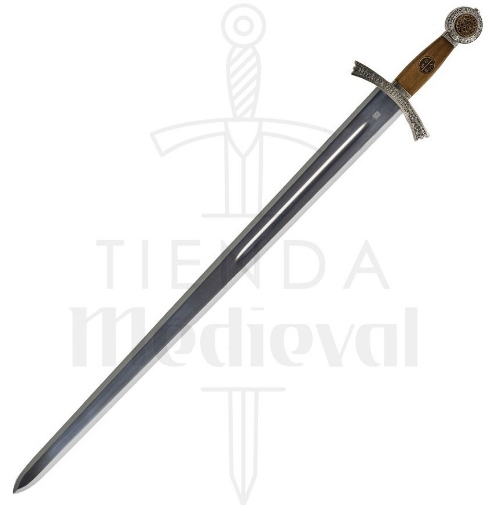
Construction Characteristics
- Total length: approximately 102 cm.
- Hilt: gilded with a 95 mm grip section, which is small for Sancho IV’s attributed stature.
- Cross-guard and pommel: chiselled, with repeated motifs and a possible inscription on the pommel surface.
- Blade: shows fragments of engraved inscription and oxidations; the original blade has no swordsmith’s mark.
Decoration and Symbolism
The presence of geometric and interlace motifs, as well as the repetition of forms on the cross-guard and pommel, suggest a workshop with multicultural influences. Toledo, in the 13th century, was a crossroads of Christian, Mudéjar, and Jewish artisans, and the weaponry produced there often reflected that technical and aesthetic blend.
Comparison: Sancho IV’s Sword versus Contemporary Types
To better understand the uniqueness of the weapon, let’s contrast it with the typical features of a 13th-century military sword.
| Aspect | Sancho IV’s Sword | Typical Military Sword (13th C.) |
|---|---|---|
| Length | ≈102 cm | 90–110 cm |
| Grip | 95 mm (small for a large wielder) | Variable; adjusted to the war hand |
| Decoration | Gilded, chiselled, interlaced motifs | Functional, sometimes decorated if it belongs to a lord |
| Swordsmith’s mark | Absent | Generally absent until later; marks more frequent from 14th C. |
| Scabbard | Not original, lacks clasp | Scabbards adapted for carrying and combat |
Metallurgical Techniques and Material Sources
The manufacture of swords in the Iberian Peninsula during the 13th century combines forging tradition and metal trade. Toledo blacksmiths were renowned for their skill, although not all luxurious pieces were necessarily forged locally. Metallographic analysis of similar finds shows the use of steels with controlled carburization and primitive heat treatments that increased the blade’s toughness.
In the case of Sancho IV’s sword, the absence of a mark makes it difficult to identify the workshop. Nevertheless, the quality of the chiselling and gilding indicates the intervention of specialized goldsmiths, suggesting a mixed production: a functional blade accompanied by a decorative mounting made by prestigious artisans.
What Does the Fragmentary Inscription Tell Us?
The partial inscriptions on the blade are in themselves a clue. Although eroded and fragmented, they usually indicate dedications, prayers, names of the swordsmith, or simple protective formulas. In this case, the loss of much of the text prevents a complete reading, but it confirms the practice of using inscriptions on high-ranking weapons during the period.
Conservation, Exhibition, and Museographic Reading
Today, the sword is exhibited in the Museum of Tapestries of Toledo Cathedral along with the crown and pillow. In controlled showcases, the public can see a piece that has survived a thousand centuries between history and legend. Museography seeks to convey both the political dimension of the monarchy and the funerary intimacy of the regalia.
Conservation challenges include stabilizing the rust on the blade, protecting the gilding, and appropriate contextualization within the museum narrative. Such an object requires clear explanations for the visitor: what is original, what has been restored, and what questions remain open.
Modern Replicas and Material Legacy
The existence of contemporary replicas of Sancho IV’s sword speaks of the interest in recovering historical forms and decorations. These reproductions, made with modern materials such as stainless steel and contemporary techniques, try to reproduce the appearance and proportions of the original for didactic, cinematographic, or collector purposes.
It is important to distinguish the replica from the original: the former serves to bring the design closer to the public, the latter preserves the material information that researchers interpret. The rise of replicas also improves cultural dissemination, but it does not replace scientific research on the original object.
Remaining Questions and Research Lines
- Exact origin: conclusive evidence is lacking regarding the workshop that manufactured the sword.
- Actual function: determining whether it was a weapon of use, a ceremonial piece, or an inherited relic.
- Metallographic analysis: a detailed study of the blade could provide data on the steel’s technique and origin.
- Complete funerary context: understanding the selection of objects in the regalia and their ritual significance during Sancho IV’s reign.
Implications for Military and Social History
Sancho IV’s sword is a microcosm of the Iberian Middle Ages. It allows us to reflect on the relationship between power, image, and materiality. A weapon can be both a tool of war and a symbol of legitimacy. The fact that some pieces of the regalia appear reused speaks to us of dynastic conservation practices and conscious decisions about what to bequeath and what to reserve.
Furthermore, this piece underlines the need to promote armament archaeology in Spain: each metallic object provides data on commercial networks, artisanal techniques, and ways of life that do not always appear in written sources.
Final Reading and Reflection
Before Sancho IV’s sword, it is appropriate to maintain the humility of the researcher and the imagination of the storyteller. The piece gives us certainties—dimensions, materials, museum location—and leaves us with enigmas—exact origin, daily use, inheritance path. That space between what is known and what is surmised is where history becomes fascinating.
By contemplating the image of the sword, we understand that objects do not just tell facts: they evoke hands that wielded them, ceremonies that displayed them, and political strategies that used them as testimonies of power. The story of Sancho IV and his sword reminds us that material memory is a direct way to converse with the past.
VIEW SANCHO IV OF CASTILE SWORD, 13TH CENTURY | VIEW MORE HISTORICAL SWORDS
